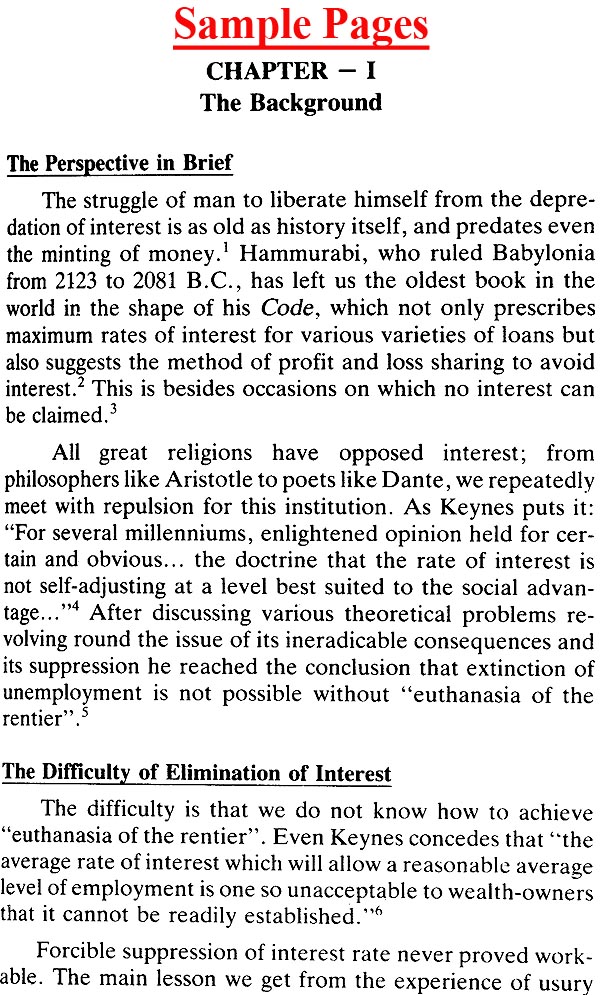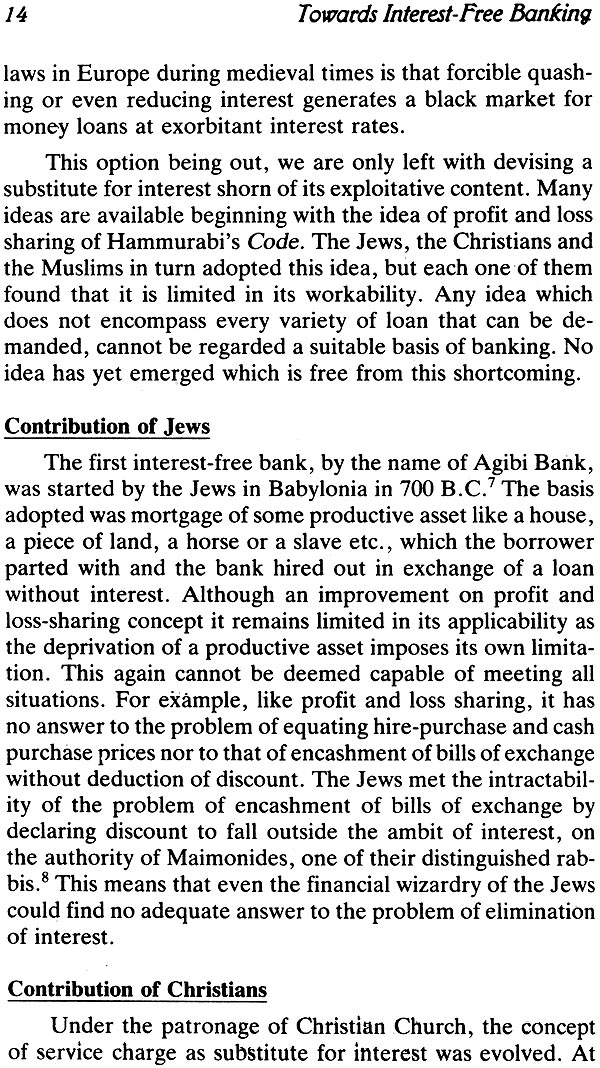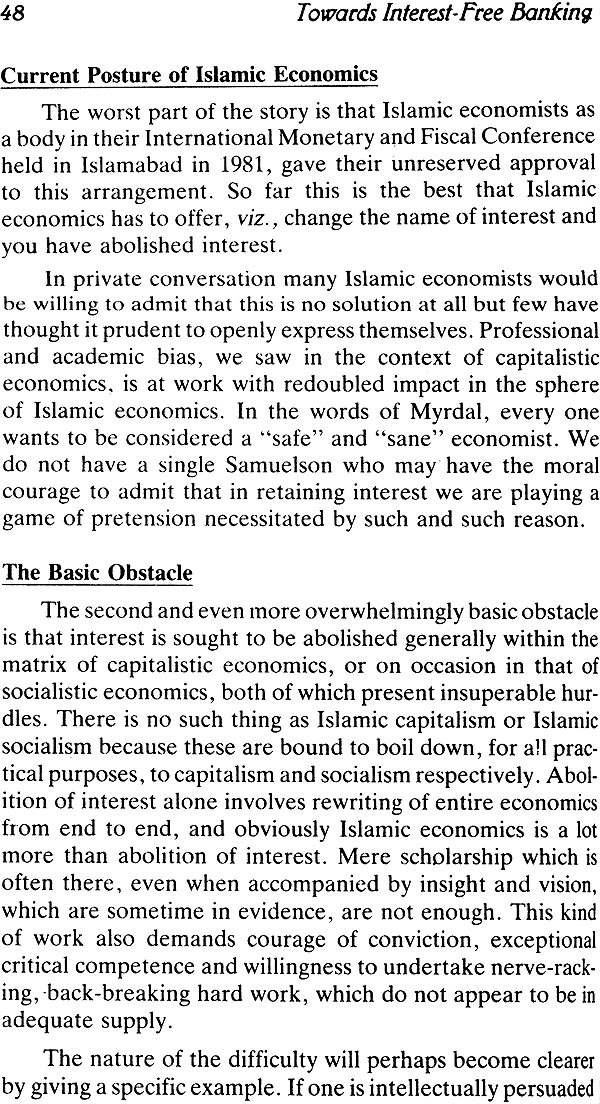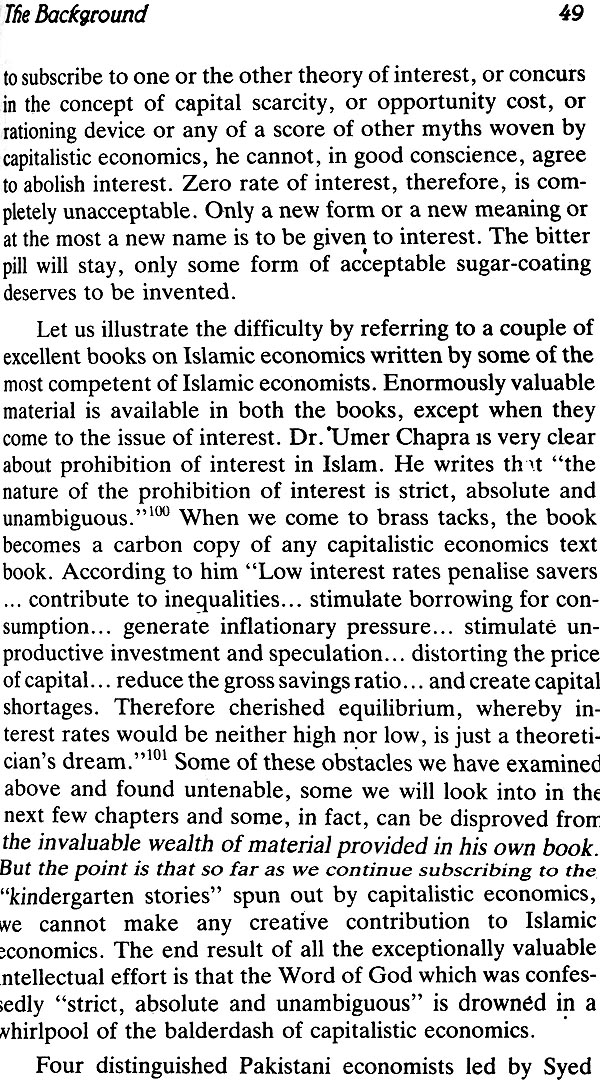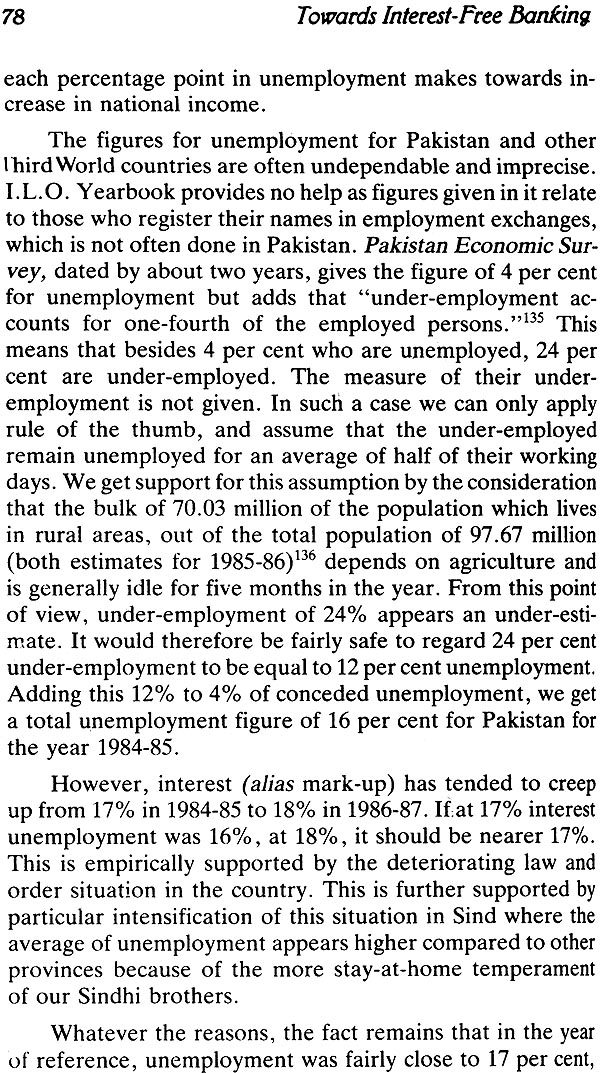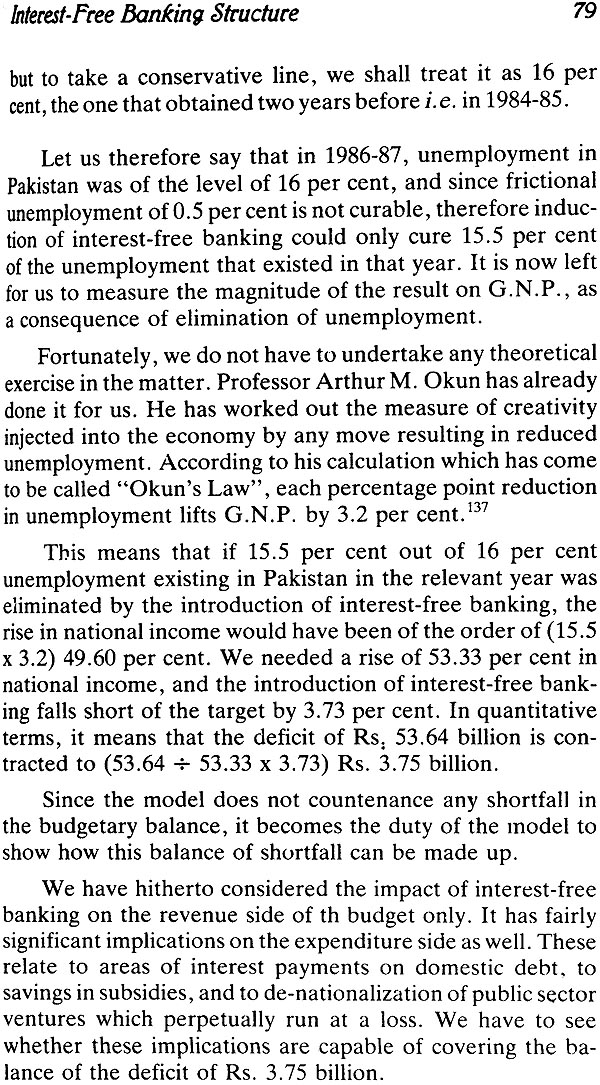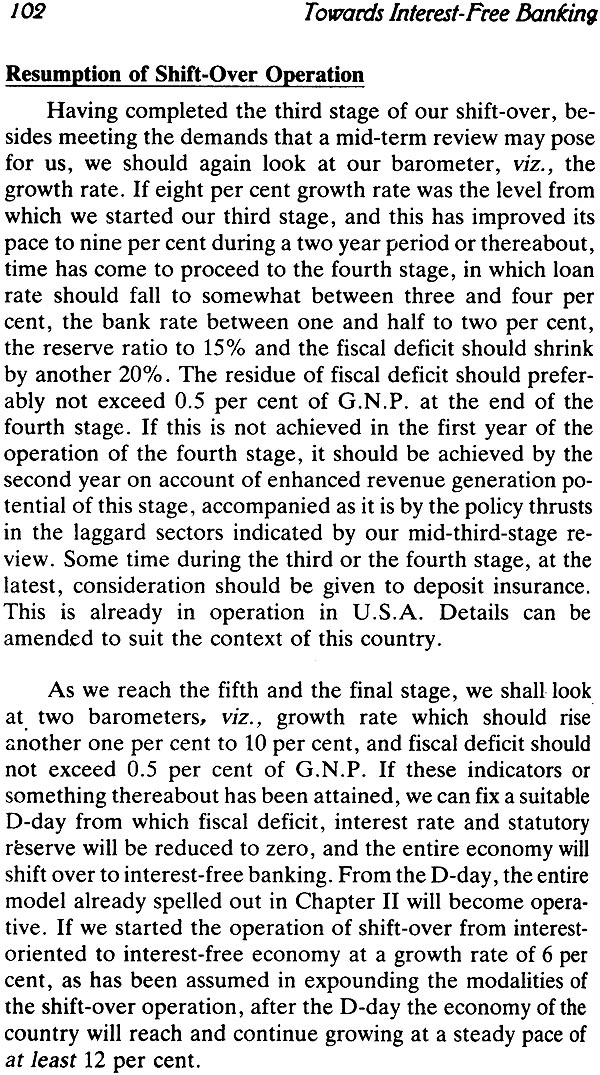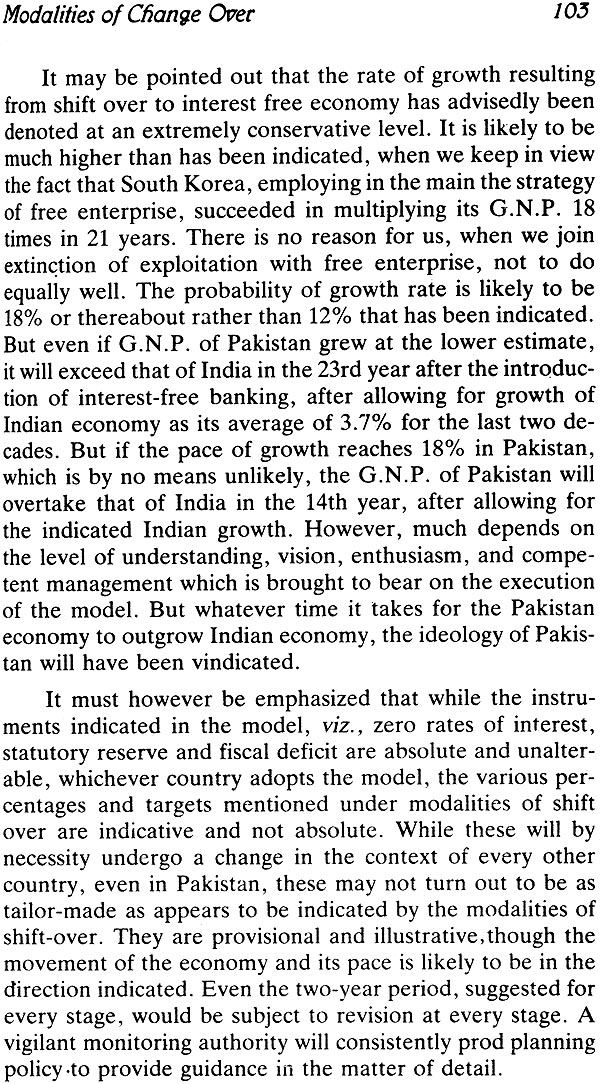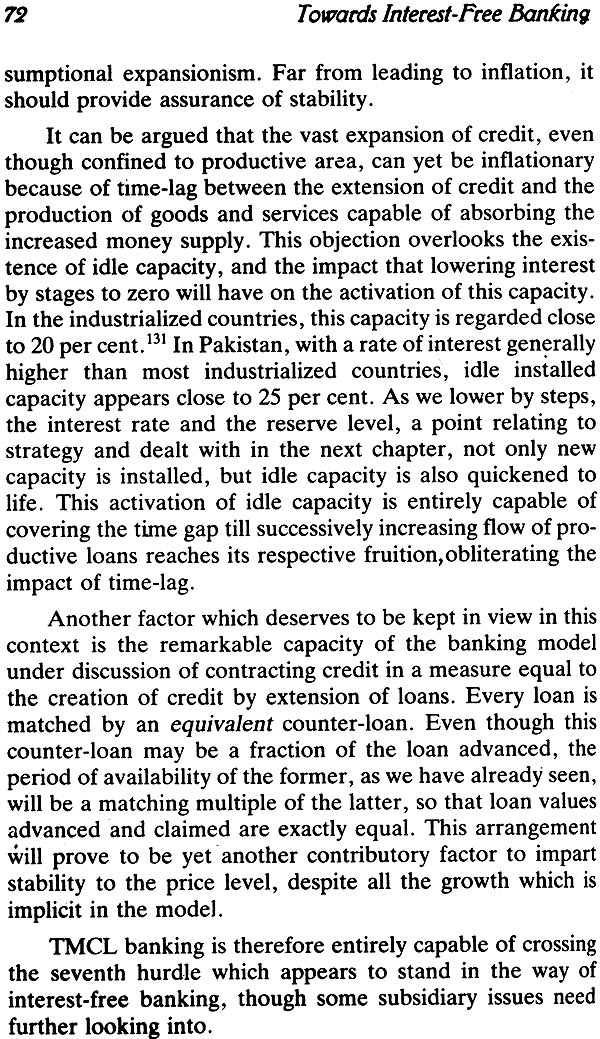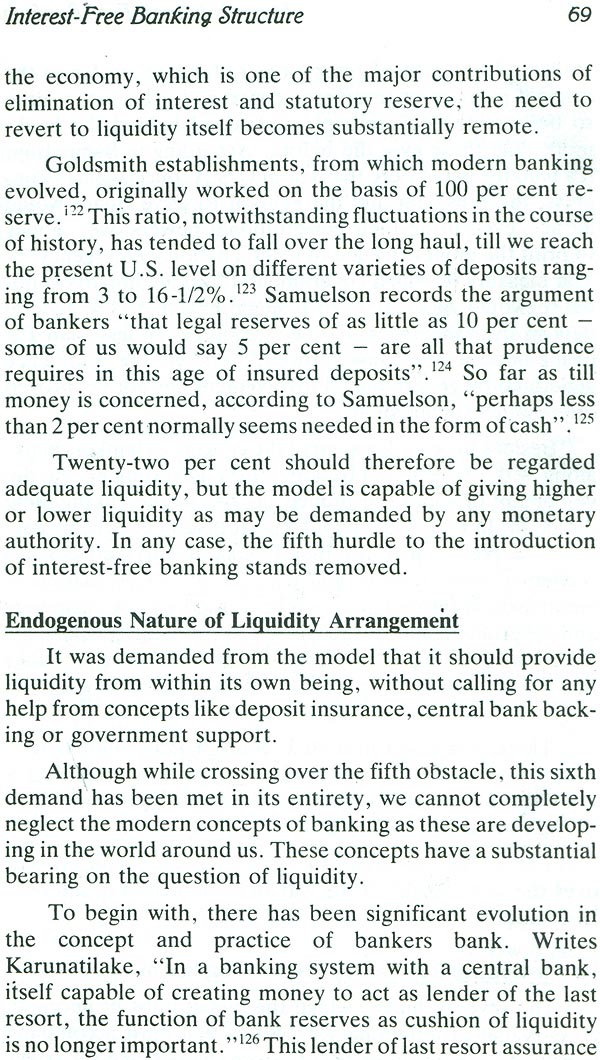
Towards Interest-Free Banking
Book Specification
| Item Code: | NAJ100 |
| Author: | Shaikh Mahmud Ahmed |
| Publisher: | Kitab Bhavan |
| Language: | English |
| Edition: | 2009 |
| ISBN: | 8171513123 |
| Pages: | 144 |
| Cover: | Paperback |
| Other Details | 8.5 inch x 5.5 inch |
| Weight | 190 gm |
Book Description
Introduction
Though I have wrestled with various issues relating to Islamic economics for an entire life-time, for the last quarter century, I shifted over to an in-depth study of interest in the scientific context. Notwithstanding the complexity of the issue, from a humanistic point of view certain aspects attract attention to it, like the depredation that is an inescapable part of it, the perversions it inflicts on the functioning of every economy and deprivations that man has to suffer as its consequence. This naturally involves evaluation of the vast literature that has been produced in favour of this institution, because if interest is as equitable, fair and just as is made out by the bulk of capitalistic economics, it cannot lead to the sorry plight which the entire so called free world in general, and the Third World in particular, finds itself in.
The entire problem is obviously a scientific and technical one which can be properly handled only in a secular context. This approach becomes more compelling when we come to brass tacks, particularly the problem of how to evolve an interest-free banking structure. Since on this issue the pundits of economics and banking are sure that it cannot be done, one has to speak in their language if one happens to differ.
The result of all this effort has taken the form of a two volume study, entitled Man and Money, which is in the final stage of revision before publication. But even this process will not take less than a year, and naturally publication of a book more than ten times the size of the present one must take yet another year. In the mean time friends, who have read the larger manuscript in its entirety or in parts and regard it somewhat highly, have started feeling frustrated by what they call its "unending revisions." They therefore insisted that I leave aside the main work for a while and write a short book which brings out the salient points of the study within the context of the ideology of Islam and the vision of the founding fathers of this country. The result is the present book.
Yet, this is by no means a summary of Man and Money. There is not only the difference of context already mentioned above, but also of the fact that the larger work is far more concerned with the theoretical necessity of abolition of interest, and the repudiation of myths that have been evolved in its support, and the smaller one primarily focusses on the practical problem of evolving an interest-free banking structure. In fact, from this point of view, it goes farther than the larger work, as Man and Money does not concern itself with modalities and strategies of shift-over from an interest oriented economy to an interest-free one, which is the subject of Chapter III of this book.
The main justification for publishing this book is that those interested in the subject, like the academician, the politician, the social thinker and, above all, the policy-maker, are likely to be too busy to give time and concentrated attention in the measure that the larger book will demand. So, the whole thing has been reduced to a capsule form, besides the effort to make it as readable as possible, with emphasis on the practical side of things.
Those who are not interested in the theoretical aspect of the issue, or are too busy to read the entire book, may skip over Chapter I. They can come back to it if they feel like it. On the other hand, those who find the theoretical enunciation a little too brief may wait for the publication of Man and Money.
Any academic body, political party, social forum, business federation. banking organisation, and planning or policy-making body that has questions to ask or clarifications to seek will find me willing to give my time for verbal elaboration according to mutual convenience. To make such an exercise meaningful, the proper course will perhaps be to formulate questions and indicate the nature of clarifications in advance to enable me to give due attention to them.
I am even more eager to learn and shall be grateful to any reader if he finds and communicates to me any factual or interpretative error. I shall be no less obliged if any other shortcomings of my approach or presentation are pointed out to me.
If any reader finds anything of value in this book, the credit should go to several friends including Mr. Mohammad Akram Khan" Mr. Enayatullah and Mr. Siraj Muneer without whose insistence, I could not have spared time to write it. I should also express my gratitude to Mr. Mohammad Akram Khan for his consistent help in providing creative criticism, understanding and enthusiastic support.
Contents
| Introduction | 9 |
| Chapter-I: The Background | 13-48 |
| Chapter-II: Interest-Free Banking Structure | 53-87 |
| Chapter-III: Modalities of Change Over | 89-104 |
| Chapter-IV: Answers to Possible Objections | 107-133 |
| Reference and Notes | 137 |
| Index | 143 |
